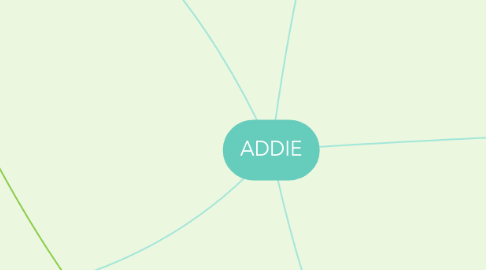
1. Implement
1.1. In this stage, the course is delivered. Additional knowledge transfer might be needed prior to that, e.g. Training of Trainers or briefing the support staff. Provide support in solving any delivery issues.
1.2. Besides the actual delivery, other activities in this stage can be:
1.2.1. Setting up the course in a LMS (audience, passing mark, feedback forms, etc.)
1.2.2. Tracking delivery using reports
1.2.3. Training of Trainers
2. Evaluate
2.1. The evaluate stage has two components:
2.1.1. Continuous evaluation during each stage (formative evaluation) and using that information to revise and refine the outcomes of each stage;
2.1.2. Course evaluation (summative evaluation), when data is collected, interpreted and analyzed. This information can be used for future courses or iterations of the same course.
2.1.2.1. Kirkpatrick's 4‐Level Model of Evaluation can be used for evaluation. The 4 levels are:
2.1.2.1.1. Reaction
2.1.2.1.2. Learning
2.1.2.1.3. Behavior
2.1.2.1.4. Results
2.2. The material outcome of this stage can be:
2.2.1. An evaluation report
3. Analyze
3.1. In the first stage, analyze the existing situation and take into account all the variables - the intended audience, the needs to be addressed, if these needs can be met by training or other ways can be used to meet the business goals, etc.
3.1.1. Use helping questions to identify all the variables: Who, What, When, Where, Why, How?
3.1.1.1. Who is the intended audience?
3.1.1.2. What is their current level of knowledge?
3.1.1.3. What skills they need to acquire?
3.1.1.4. Why they need these new skills?
3.1.1.5. When will they need them?
3.1.1.6. What resources are available?
3.1.1.7. Where will the training be conducted?
3.1.1.8. How can the audience be taught the new skills?
3.1.2. The material outcome of this stage can be:
3.1.2.1. Training needs analysis
3.1.2.2. Training plan
4. Design
4.1. Use the information from the first stage to identify the learning objectives. The topics covered by the training are determined and also the structure, method of delivery, use of technology, etc.
4.1.1. Take decisions regarding:
4.1.1.1. Learning objectives
4.1.1.2. Strategy
4.1.1.3. Lesson plan
4.1.1.4. Delivery methods
4.1.1.5. Duration
4.1.1.6. Assessment
4.1.1.7. Feedback
4.1.2. The material outcome of this stage can be:
4.1.2.1. Course Design Overview
4.1.2.2. Storyboard
4.1.2.3. Prototype
5. Develop
5.1. Start creating the actual course. Follow the storyboards/prototype, expand the information and add content and media. Include testing in this phase.
5.1.1. Create content
5.1.2. Create supporting materials
5.1.3. Create activities
5.1.4. Create assessments
5.2. The material outcome of this stage will be:
5.2.1. Course Content

